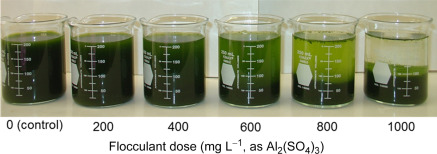Flocculant
A flocculant is a chemical substance that promotes the aggregation and settling of suspended particles in a liquid. It is commonly used in various industries, such as water treatment, mining, and wastewater treatment, to improve the efficiency of solid-liquid separation processes.

Flocculants work by creating larger and denser particles from smaller particles suspended in a liquid. These larger particles, called flocs, are easier to separate from the liquid phase through processes such as sedimentation or filtration. By promoting the formation of flocs, flocculants help in the removal of suspended solids, organic matter, and other impurities.
There are several types of flocculants available, including inorganic flocculants and organic flocculants:
Inorganic Flocculants:
Inorganic flocculants are typically metal salts, such as aluminum sulfate (alum), ferric chloride, or polyaluminum chloride (PAC). These flocculants work by neutralizing the charges on the suspended particles, causing them to clump together and settle.
Organic Flocculants:
Organic flocculants are high molecular weight polymers derived from natural or synthetic sources. These polymers can be divided into two main categories: synthetic organic flocculants (e.g., polyacrylamides) and natural organic flocculants (e.g., starch or chitosan). Organic flocculants function by adsorbing onto the surface of the particles, bridging them together, and forming flocs.
Mechanisms of Flocculation:
Flocculants work through different mechanisms to facilitate particle aggregation. These mechanisms include charge neutralization, adsorption, bridging, and entrapment. The choice of flocculant depends on the specific characteristics of the suspended particles and the desired mode of action.
Charge Neutralization: Inorganic flocculants, such as aluminum or iron salts, work by neutralizing the charges on the particles. This neutralization reduces the repulsive forces between particles, allowing them to come closer and form flocs.
Adsorption: Organic flocculants adsorb onto the surface of the particles, forming a layer that promotes aggregation. This adsorption can occur through electrostatic interactions or chemical bonding.
Bridging: Certain flocculants, particularly high molecular weight polymers, act as bridges between particles. They adsorb onto multiple particles, connecting them and creating larger flocs.
Entrapment: Flocculants can also entrap smaller particles within the flocs, effectively capturing and removing them from the liquid phase.
Flocculant Dosage and Optimization:
The effectiveness of a flocculant depends on the dosage used. Finding the optimal dosage requires careful testing and optimization to achieve the desired level of flocculation without excessive use of chemicals. Factors such as pH, temperature, mixing intensity, and the characteristics of the suspended particles influence the appropriate dosage.
Flocculant Performance Testing:
Various laboratory tests and jar tests are conducted to assess the performance of different flocculants. These tests involve simulating the conditions of the specific application and evaluating the settling characteristics, turbidity reduction, and other parameters.
Flocculants in Water Treatment:
Flocculants play a vital role in water treatment processes, such as coagulation and sedimentation. They aid in the removal of suspended solids, colloidal particles, and microorganisms, improving the clarity and quality of the treated water.
Environmental Considerations:
When using flocculants, it’s important to consider the environmental impact. Flocculants should be selected and used in a manner that minimizes adverse effects on the ecosystem. Proper disposal of the treated sludge and adherence to local regulations are crucial to prevent contamination of water bodies.

The selection of a specific flocculant depends on various factors, including the nature of the suspended particles, the pH of the system, the required dosage, and the desired separation efficiency. Flocculants are typically added to the liquid in a controlled manner, and the process may involve flocculation tanks, mixers, and settling basins.
It’s important to note that the use of flocculants should comply with local regulations and guidelines, as improper use or disposal can have environmental impacts. Additionally, specific instructions and safety precautions provided by the manufacturer should be followed when handling and using flocculants.

